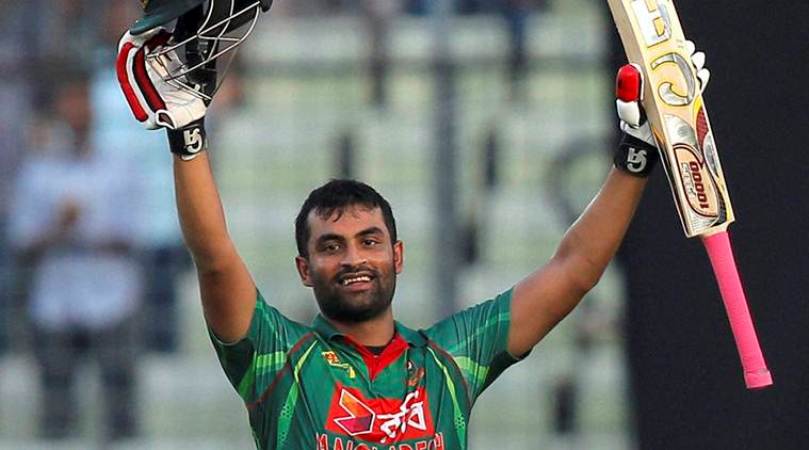 Now that the World Cup is over for Bangladesh, the team has time to reflect on what went wrong during the rigorous campaign and what is needed to improve to do better next time.
Now that the World Cup is over for Bangladesh, the team has time to reflect on what went wrong during the rigorous campaign and what is needed to improve to do better next time.
Bangladesh had been the unluckiest team in the whole campaign as they floundered in key moments, lost point in a game they expected to win, missed key players for an important game and lost few vital tosses.
Two players, Tamim Iqbal and Mashrafee bin Murtaza, who were so crucial to their prospect had had a miserable tournament which inevitably increased the burden on others.
Yet they left the tournament as what coach Steve Rhodes described as ‘people’s team’, for the excitement they provided and the fight they showed in some lost cases to stay in contention for a place in the semi-final until their penultimate match.
Statistically, this was another ordinary World Cup for Bangladesh where they did no better than the last three editions in 2007, 2011 and 2015. Bangladesh won three matches in each of these editions as they did in 2019, which made their campaign average.
But what statistics cannot show is how nearly they left New Zealand chocked, how they gave a strong chase to a 381-run target against Australia and how they pushed India until the end. Bangladesh could never do this in any other World Cup.
They spoiled South Africa’s campaign with the opening win, chased a big target against West Indies with grace and gave Afghanistan the lesson they deserved on a pitch that suited their cricket best.
The biggest achievement for Bangladesh this time was perhaps that no team could take them for granted and everyone treated them with respect, which was not the case in any of the five other World Cups they played.
The expectation was always high back in home, though the reality was always different.
Unlike the other semi-final contenders, they came without a tear-away pacer and the average bowling speed of two of the three seamers they used in most of the matches was around 120 kmph.
This was hurting the team’s prospect, so much so that before the India game Mashrafee even joked in the press conference, ‘Every delivery that we bowl is a slower.’
It was one reason why Bangladesh could not put opponents under pressure from the start in most of their games.
In four of their eight matches, they failed to take any wicket in first 10 overs and three teams – England, Australia, and India– made them pay for it with their openers putting a big stand.
They took one wicket in the first 10 overs in three matches, but a single wicket often cannot make any difference. When one wicket brings two, only that creates pressure and this is what happened against New Zealand.
Bangladesh had more than one wicket in the first 10 overs only in that game, which made New Zealand nearly tremble to a defeat at The Oval.
Fielding was one big issue for Bangladesh, which sometimes appeared painful if not completely pathetic.
When someone like Sabbir Rahman drops a catch, Sakib al Hasan and Soumya Sarkar allow the ball to race to the boundary under their arms, this tells you a story.

They are the supposed best athletes of the Bangladesh team and if they miss something they also affect the others.
Two senior players, Mashrafee and Mahmudullah, had fitness issues right from the start of the tournament which also affected the team’s fielding.
Mashrafee pointed out after the end of their campaign that Bangladesh must improve their bowling and fielding as they move forward, sparing his batsmen.
But a careful analysis would show that Bangladesh batting also had some big issues in the tournament.
Three of the four semi-finalists– Australia, India and England– had their openers scoring big in the tournament.
Bangladesh hardly deserve to be placed with them as their two openers collectively managed just one 50-run innings in eight matches with 60 being their highest opening stand.
In eight matches they had had only four hundred-run partnerships, which also proved to be inadequate for a team aspiring to be a semi-finalist.
Bangladesh’s batting failure was largely covered up by Sakib al Hasan, who had a phenomenal tournament with 606 runs in eight matches – only Sachin Tendulkar and Mathew Hayden could do better in a single World Cup.
After the Pakistan game Mashrafee hoped and prayed Sakib and some other senior players like Tamim, Mushfiqur Rahim and Mahmudullah would play at least until the next World Cup in India.
The World Cup that is now over for Bangladesh, however, proved that the team needed more than one Sakib and drastic changes in few other things if they are to get a better a result next time.
Source: New Age.









